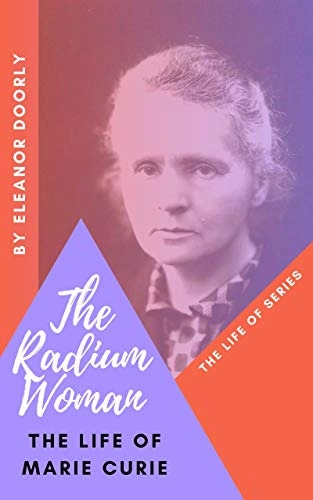Reading Level
What is the reading level of The Radium Woman: The Life Story of Marie Curie?
Analysing the books in the series, we estimate that the reading level of The Radium Woman: The Life Story of Marie Curie is 6th and 7th grade.
Expert Readability Tests for
The Radium Woman: The Life Story of Marie Curie
| Readability Test | Reading Level |
|---|---|
| Flesch Kincaid Scale | Grade 7 |
| SMOG Index | Grade 8 |
| Coleman Liau Index | Grade 7 |
| Dale Chall Readability Score | Grade 6 |
Reading Time
2 hrs 34 mins
How long to read The Radium Woman: The Life Story of Marie Curie?
The estimated word count of The Radium Woman: The Life Story of Marie Curie is 38,285 words.
A person reading at the average speed of 250 words/min, will finish the book in 2 hrs 34 mins. At a slower speed of 150 words/min, they will finish it in 4 hrs 16 mins. At a faster speed of 450 words/min, they will finish it in 1 hrs 26 mins.
| The Radium Woman: The Life Story of Marie Curie - 38,285 words | ||
|---|---|---|
| Reading Speed | Time to Read | |
| Slow | 150 words/min | 4 hrs 16 mins |
| Average | 250 words/min | 2 hrs 34 mins |
| Fast | 450 words/min | 1 hrs 26 mins |
- Authors
-
Eleanor DoorlyRobert Gibbings
More about The Radium Woman: The Life Story of Marie Curie
38,285 words
Word Count
for The Radium Woman: The Life Story of Marie Curie
4 hours and 7 minutes
Audiobook length
Description
The Radium Woman, The Life of Marie Curie by Eleanor Doorly is a classic and amazing insight into the life and times of Marie Curie. While originally written in 1939 and aimed at younger audience the book can be enjoyed by people of all ages today.Starting with Marie Curie's early life, which she spent in a Poland in-willingly meshing into the Russian Empire. The book begins with the five-year-old Manya Sklodovski (Marie Curies native name) in her family home in Poland. The book vividly describes her surroundings and the incidents of her life. Further chapters mention the fourteen-year-old learning that a friend's brother is to be executed as a rebel, and later her year's holiday after finishing school at sixteen, time spent in the country and the mountains.The biography continues through the early hard years of making a living by teaching, supporting her sister who was studying medicine in Paris, starting an illegal Polish school for peasant children in the country, and an unhappy love affair. Then, after a brief stint in Belgium, came her best days of studying both in Paris and in Warsaw. A time that formed her formidable motivation and depth of character. The book details her great discoveries which changed the face of science and earned the Nobel Prize, taking up the majority of the chapters of the book. At each step the book is peppered with descriptions of her daily life and small significant incidents to make the story come alive.
